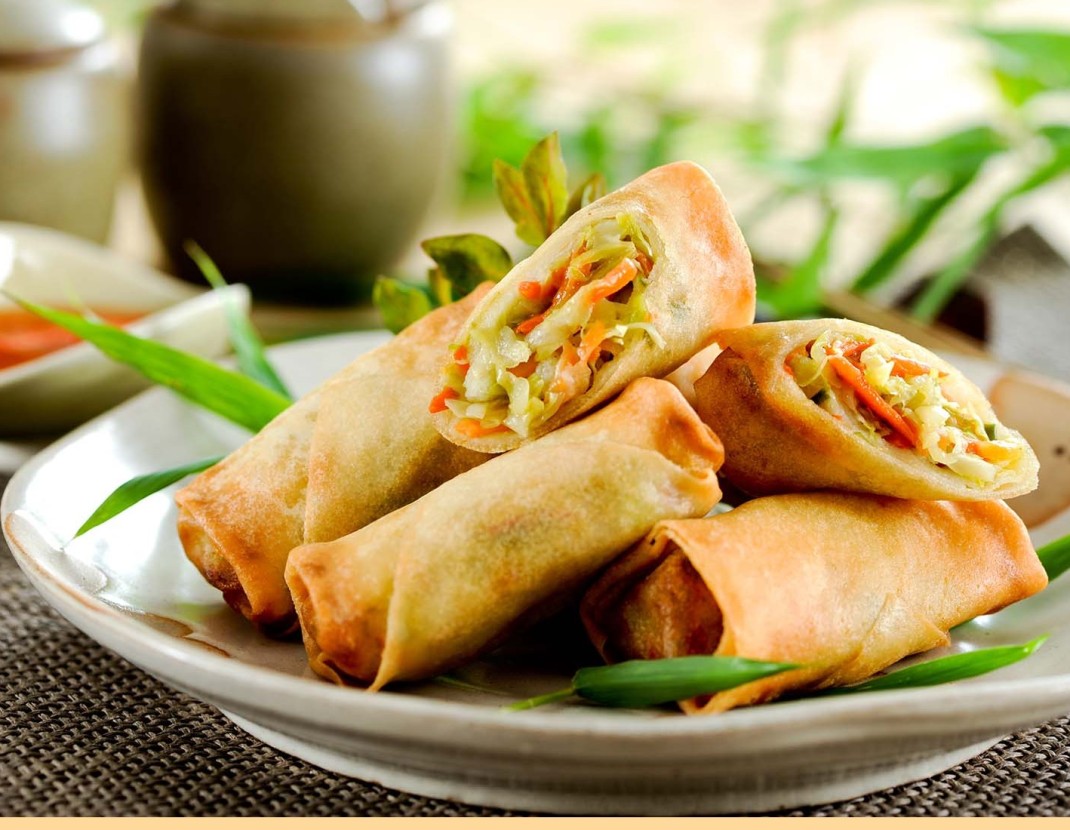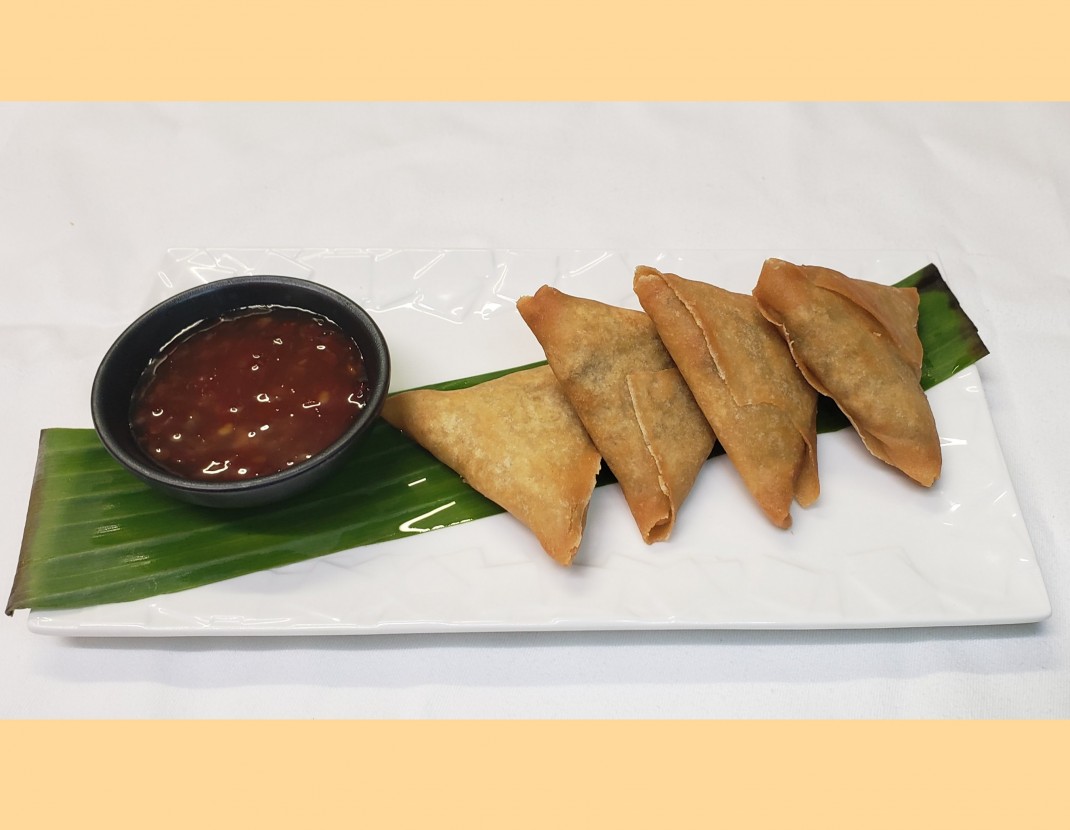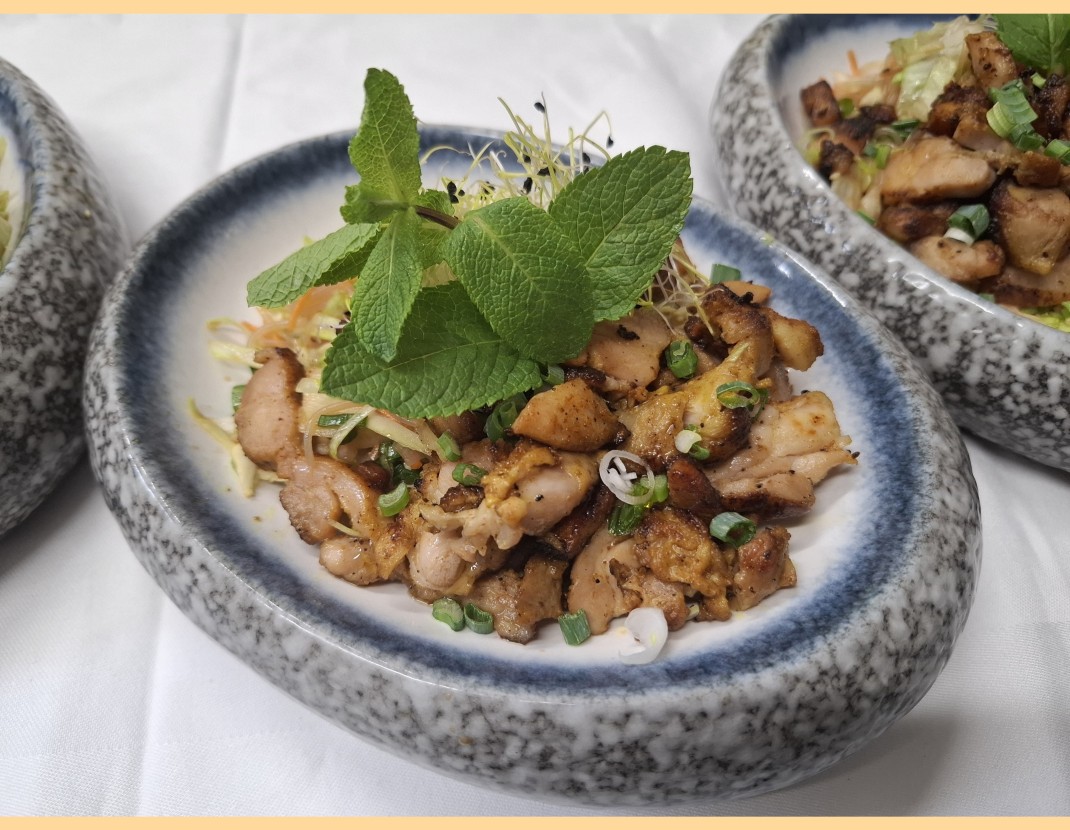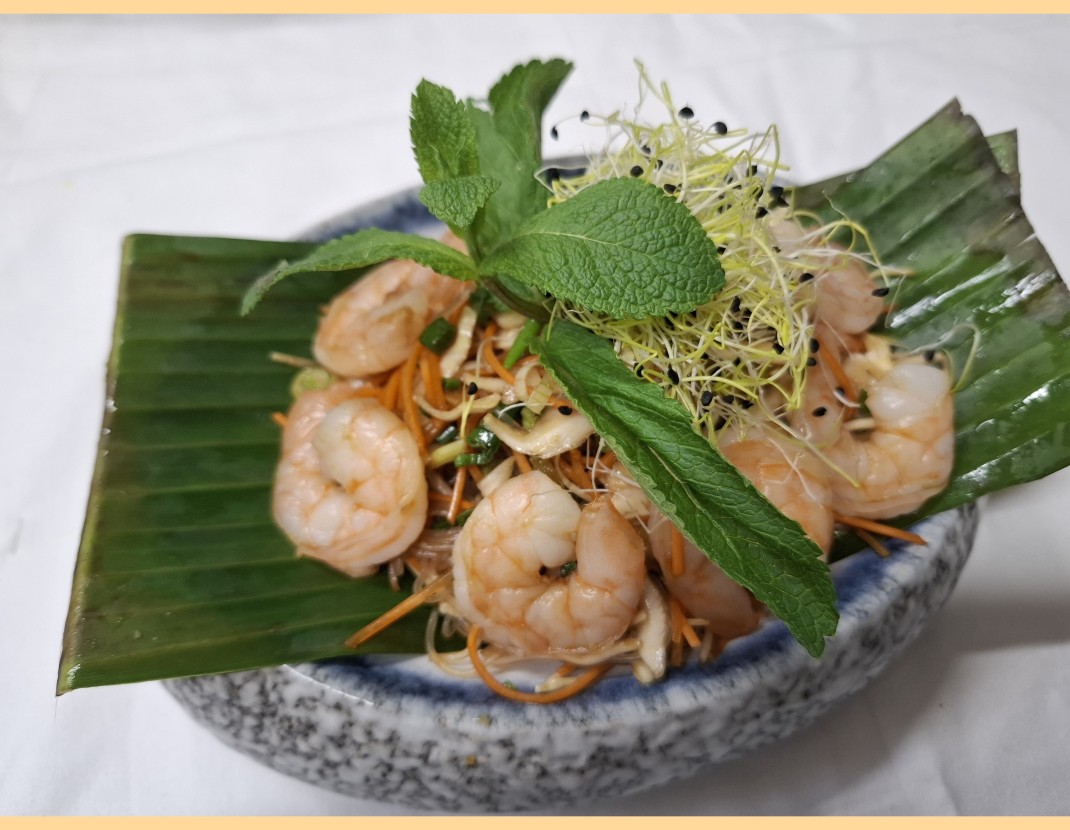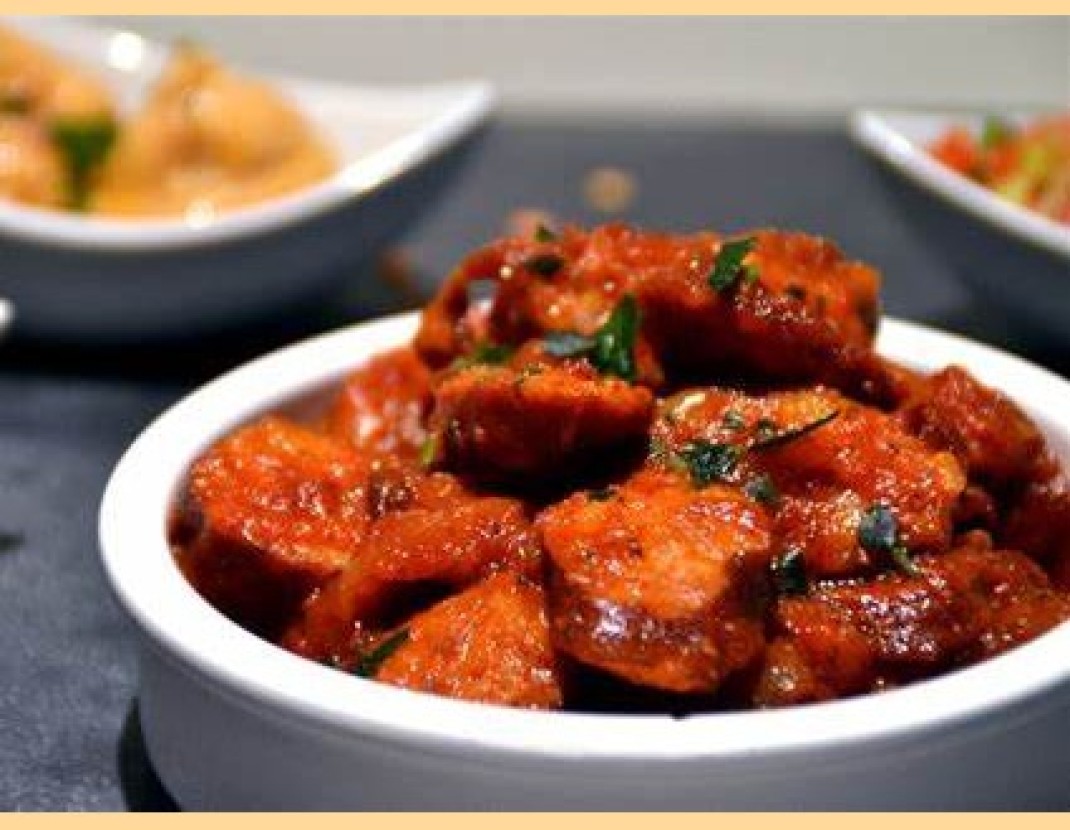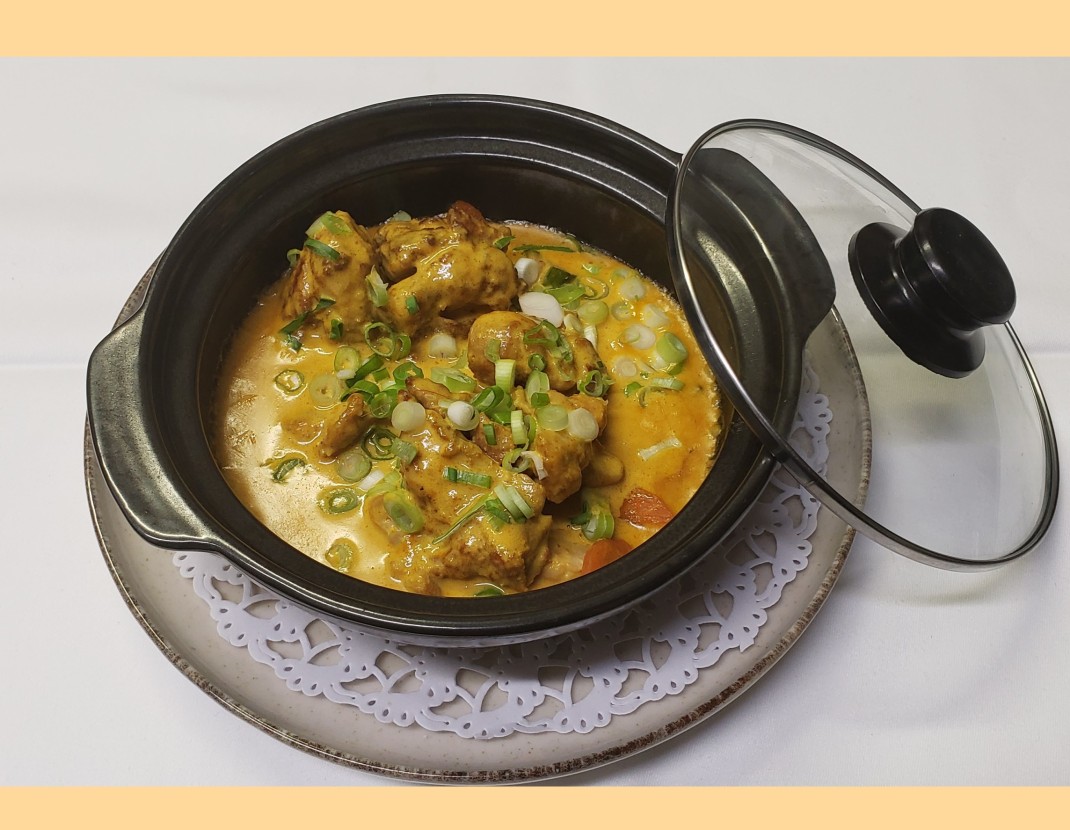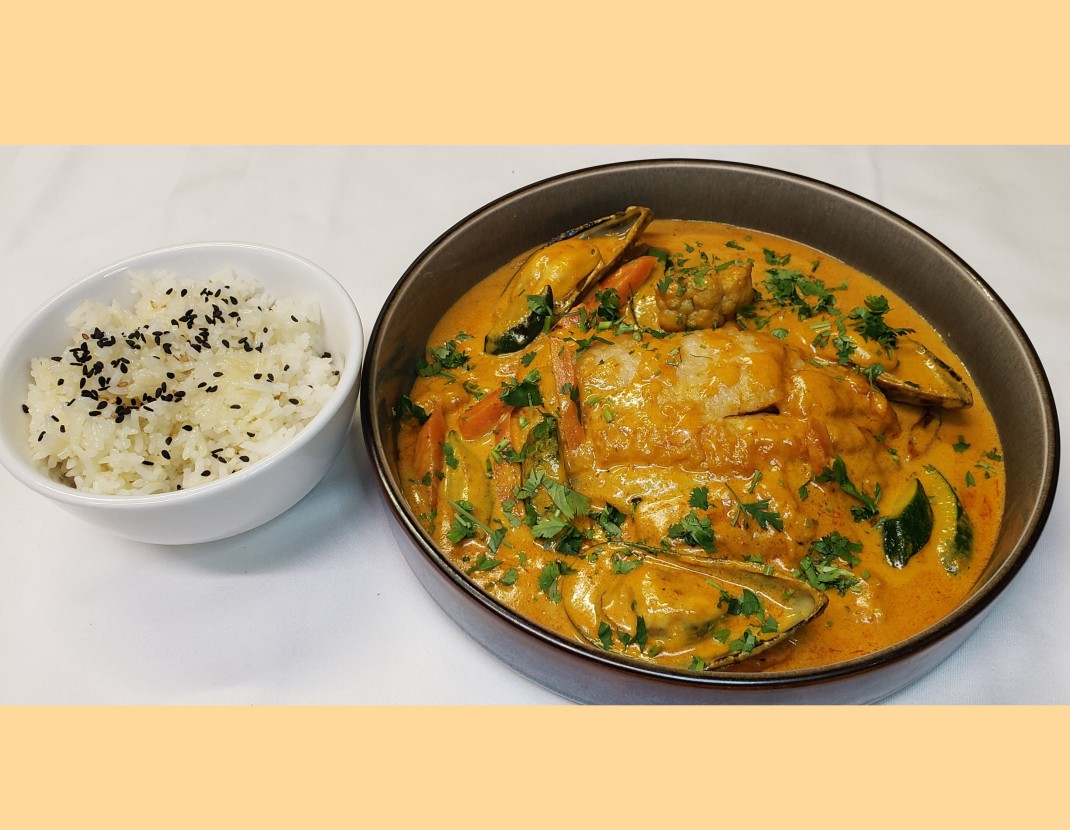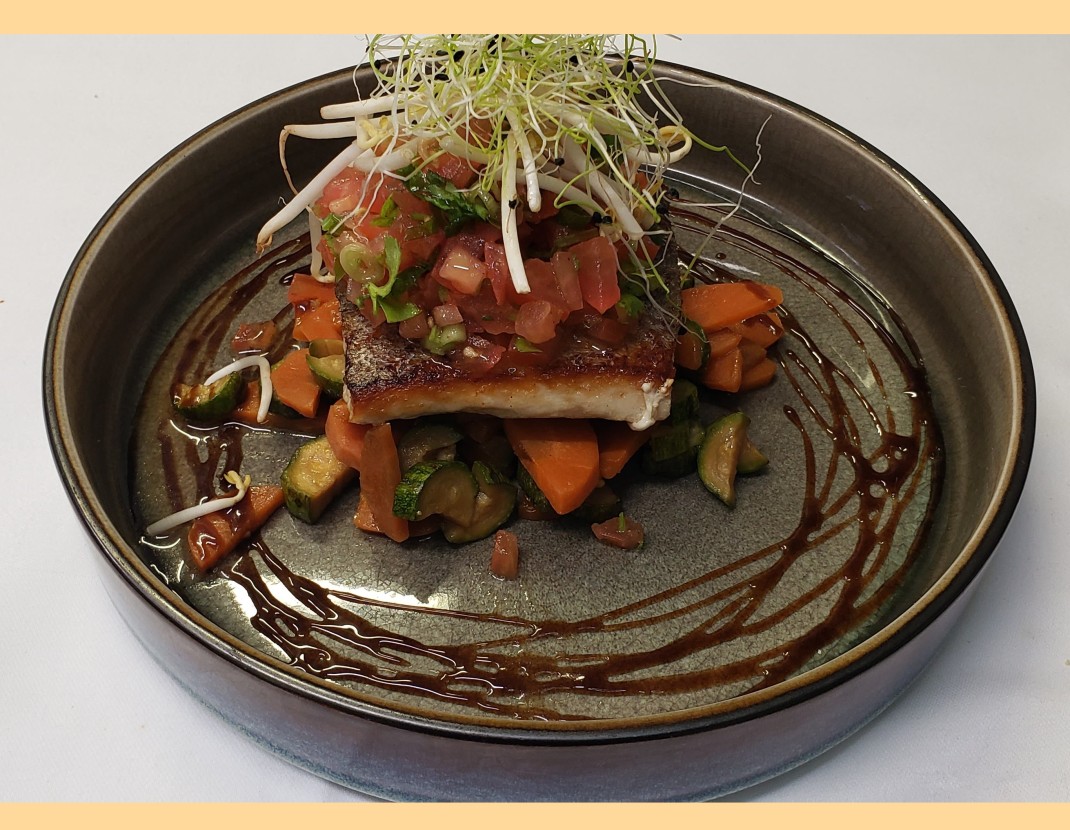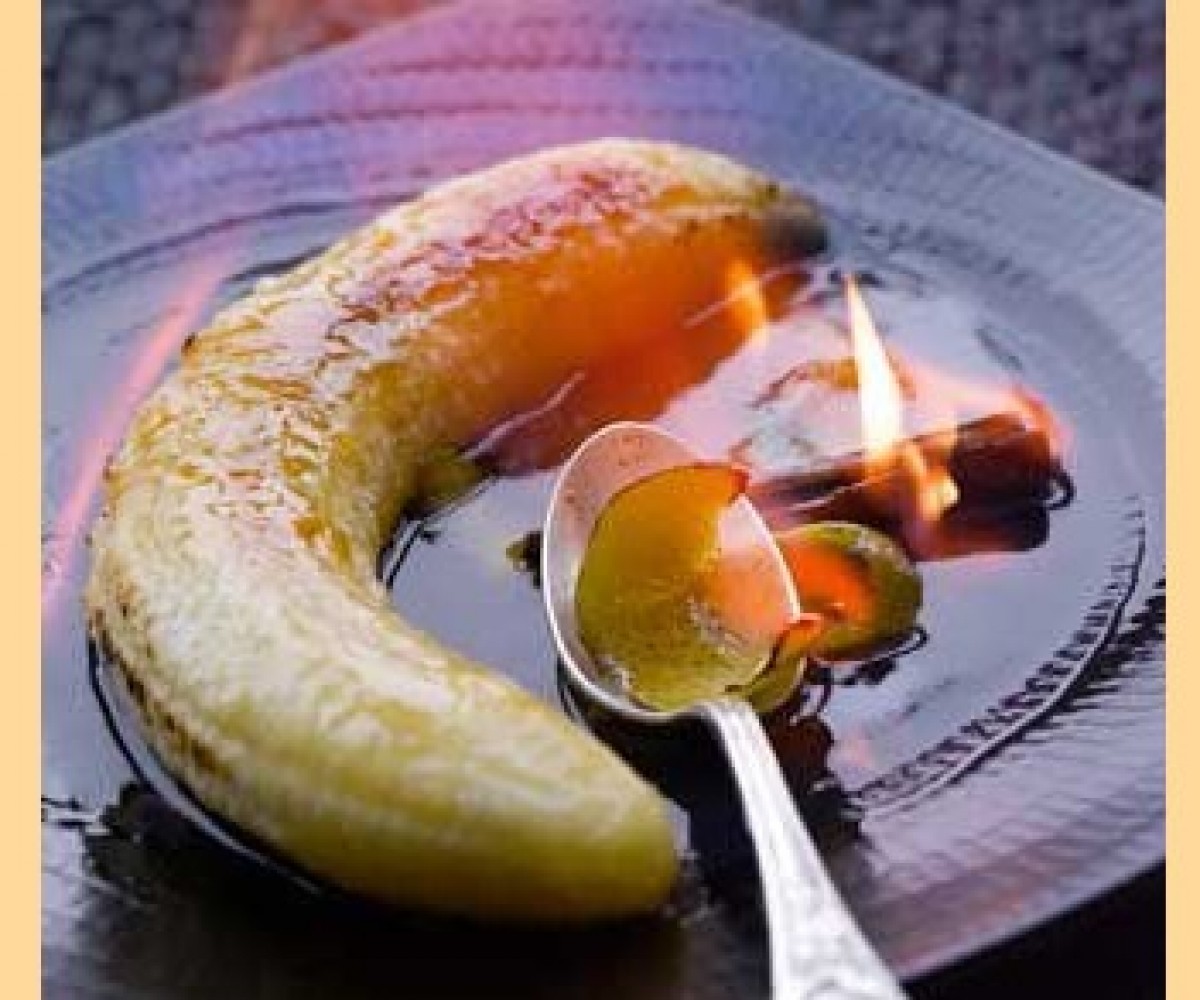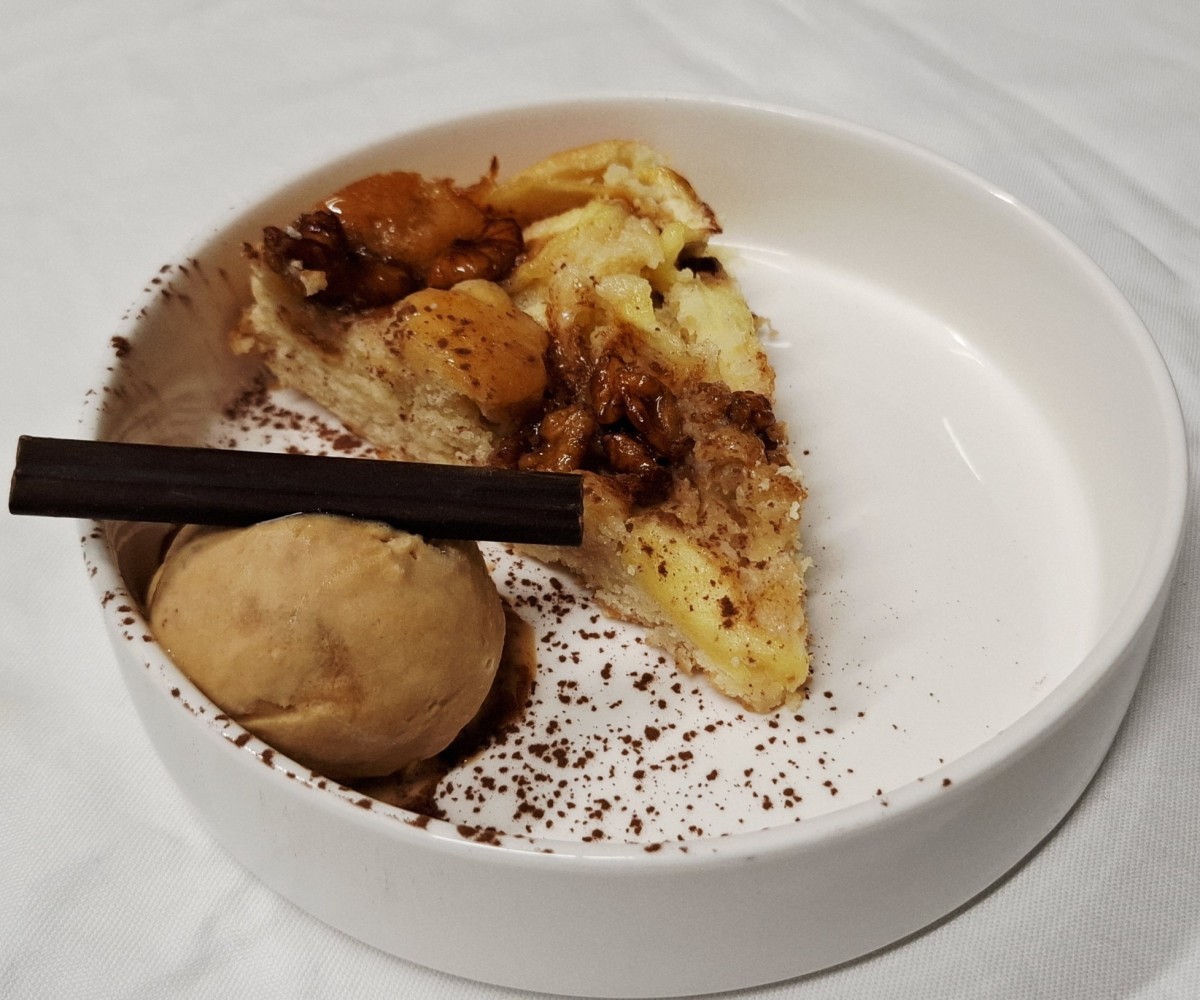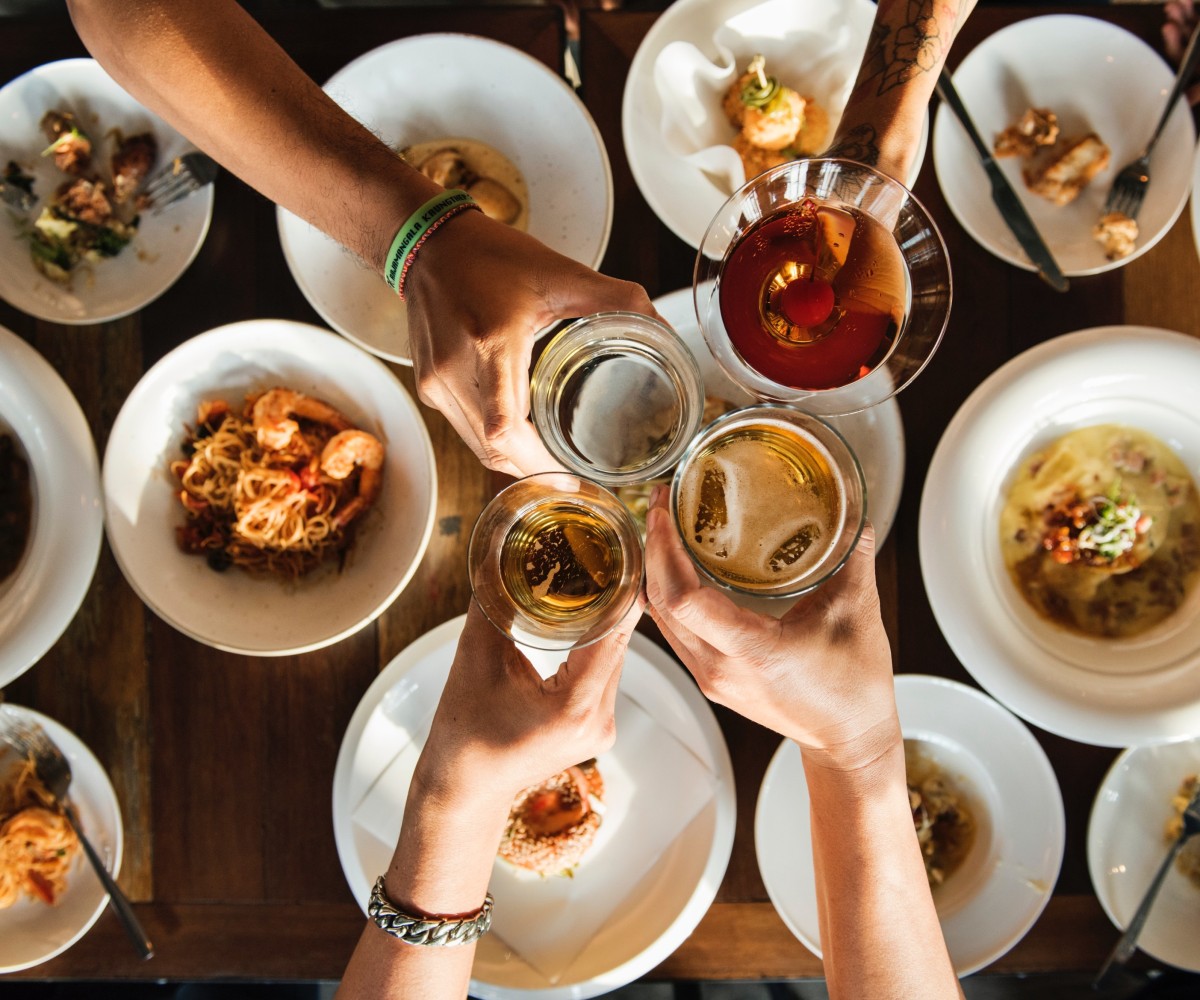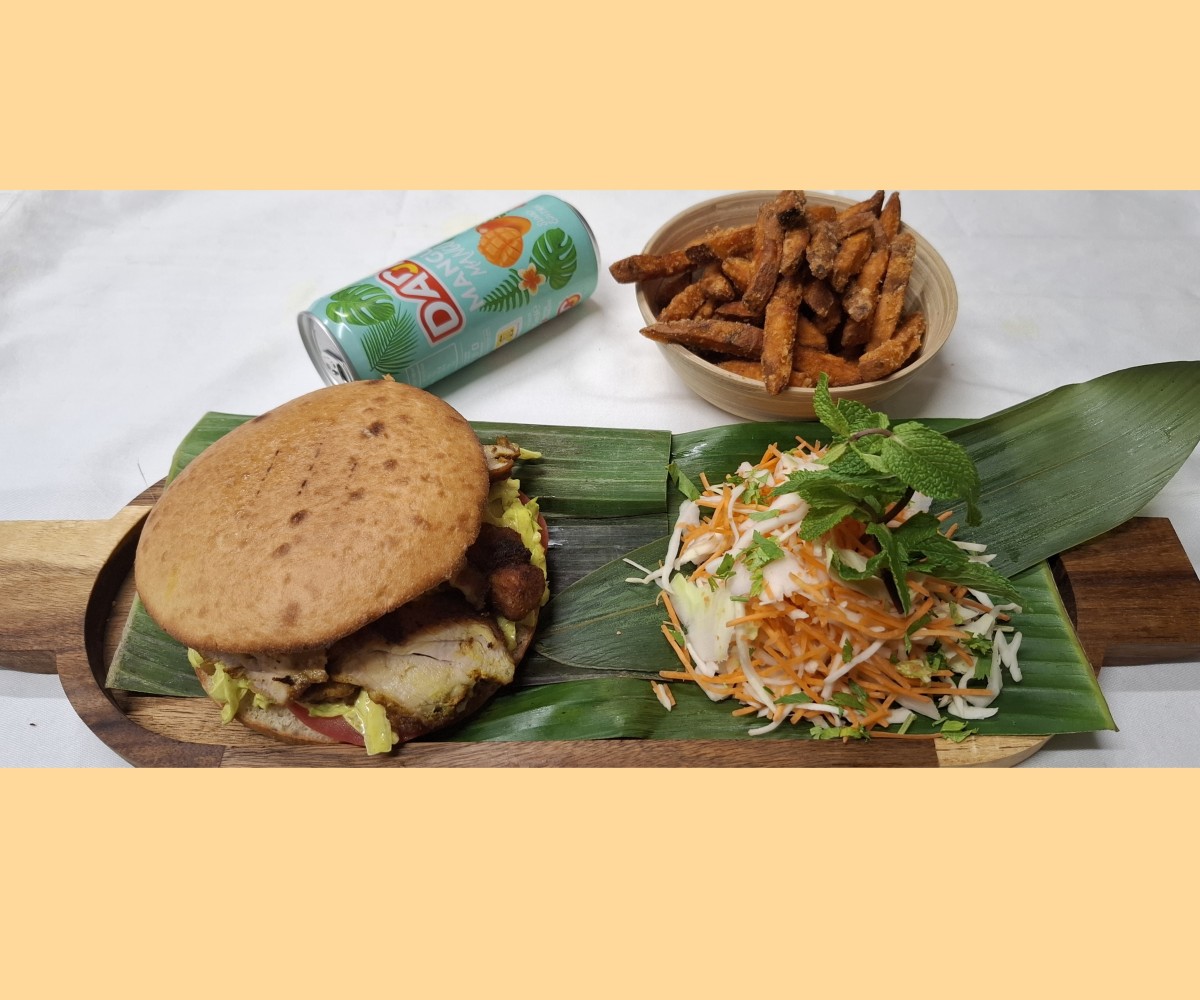- Our Creole Tapas to share
- Our Starters
- Winter Broths
- Earth
- The sea
- House Specialties
- The vegetation
- Accompaniments
- Children's menu
- Desserts
- Ice Cream
Our Creole Tapas to share

35.00 €
King Tapas
20 pieces of Tapas to share- 4 Chicken Spring Rolls
- 4 fish fritters
- 4 fried breads
- 4 Vegetable Samosas
- 4 eggplant fritters
For thrill seekers, the chef offers a homemade chili paste.
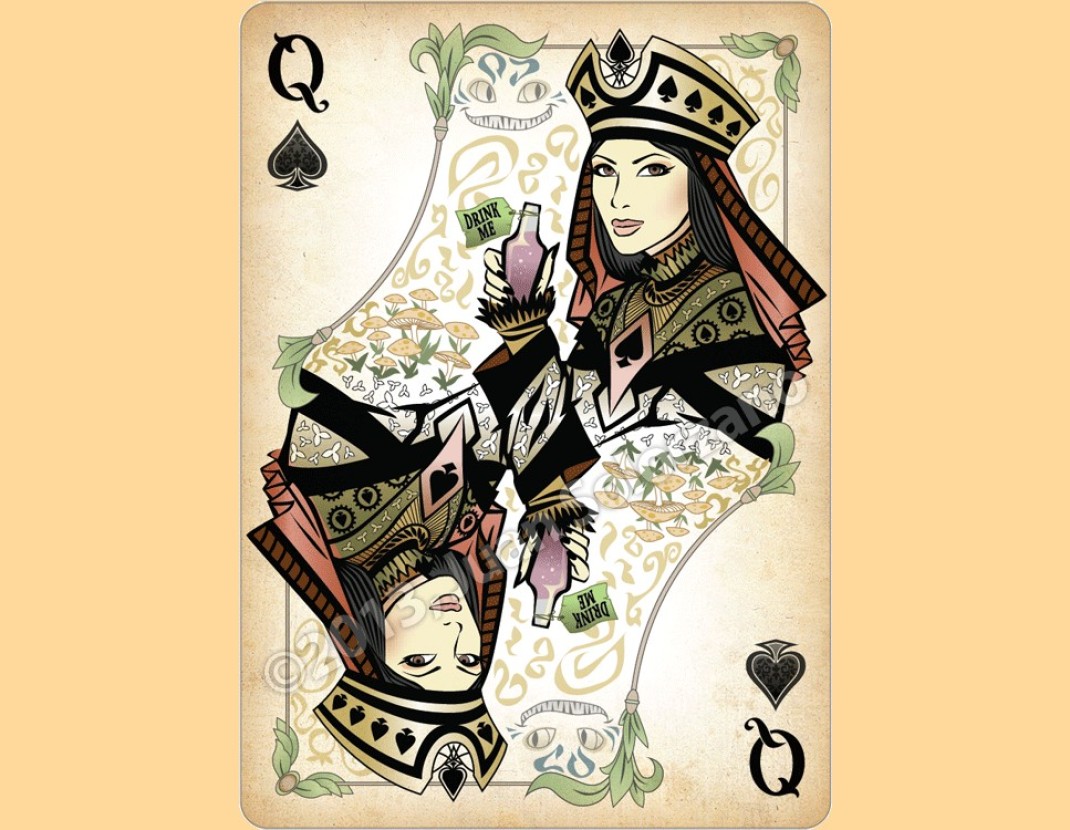
29.00 €
Queen Tapas
10 pieces of tapas to share:- 2 Creole Accras
- 2 Shrimp tempuras
- 2 vegetable spring rolls
- 2 chili candies
- 2 fried breads
For thrill seekers, the chef offers a homemade chili paste.
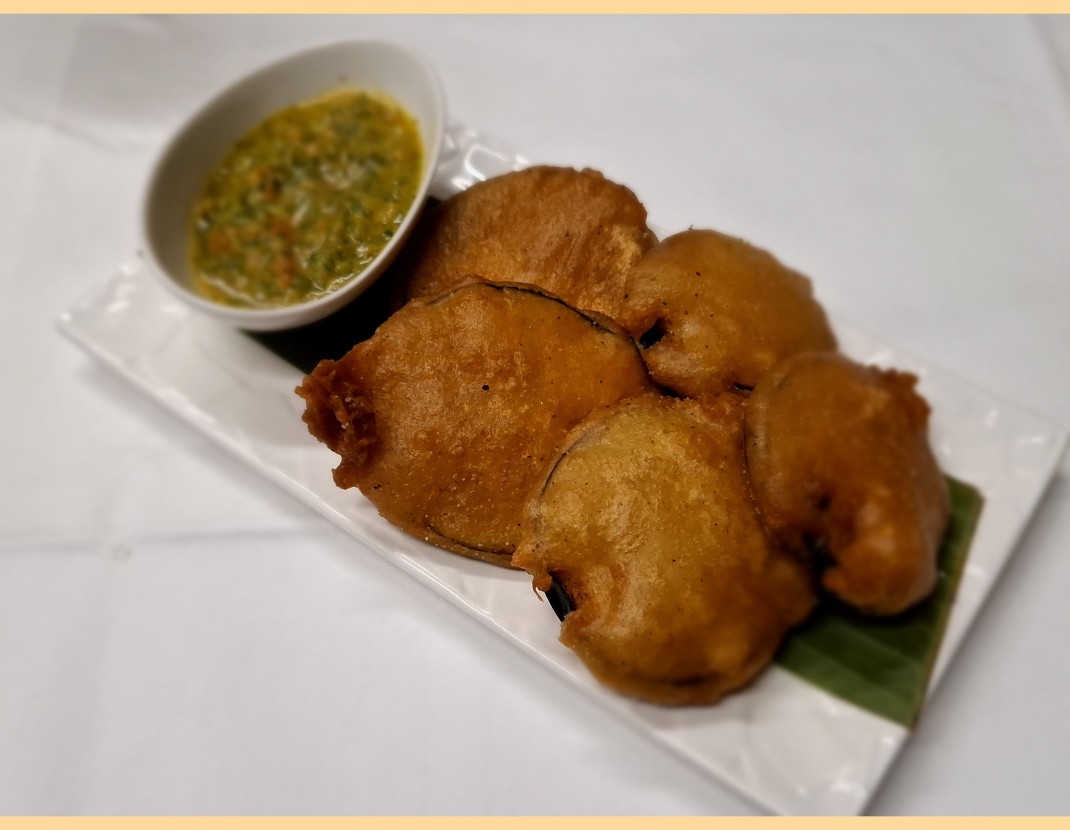
8.00 €
Bringelle Donut
Eggplant fritter like in Mauritius served with satini cotomili sauce (made with coriander and tomato)
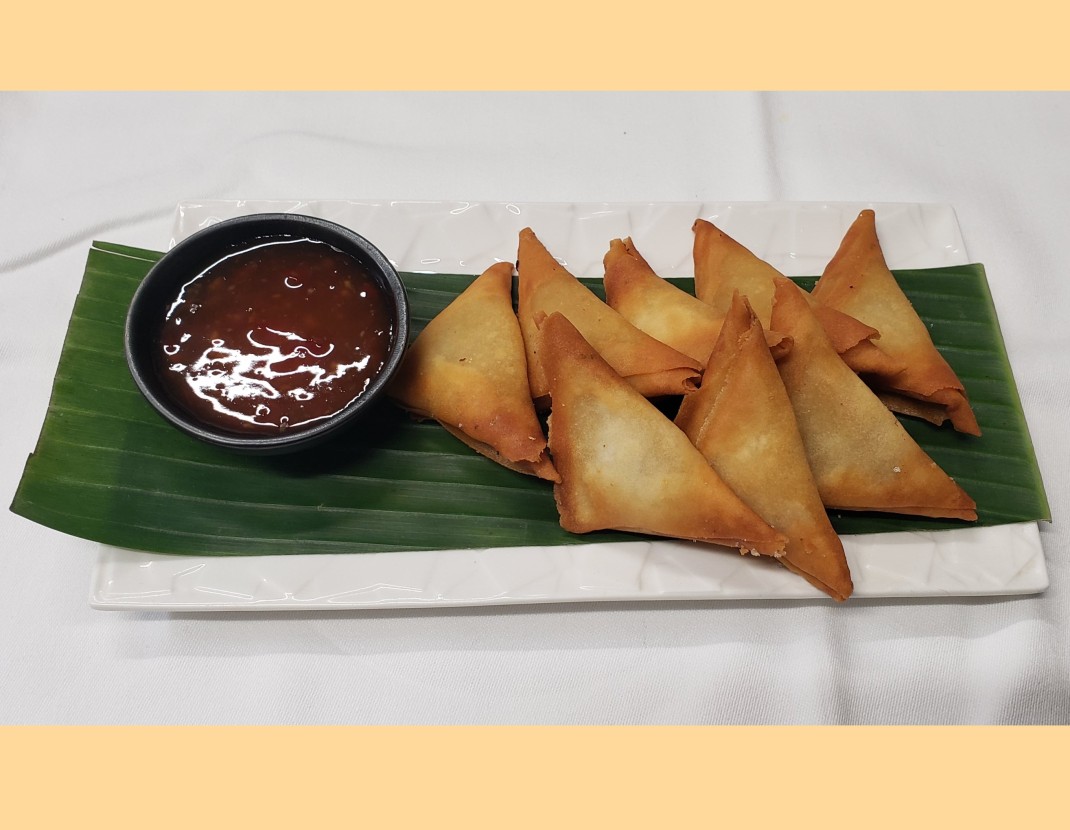
8.00 €
Curry Ti Samosas
7 mini samosas made with vegetables and mild curryOur Starters
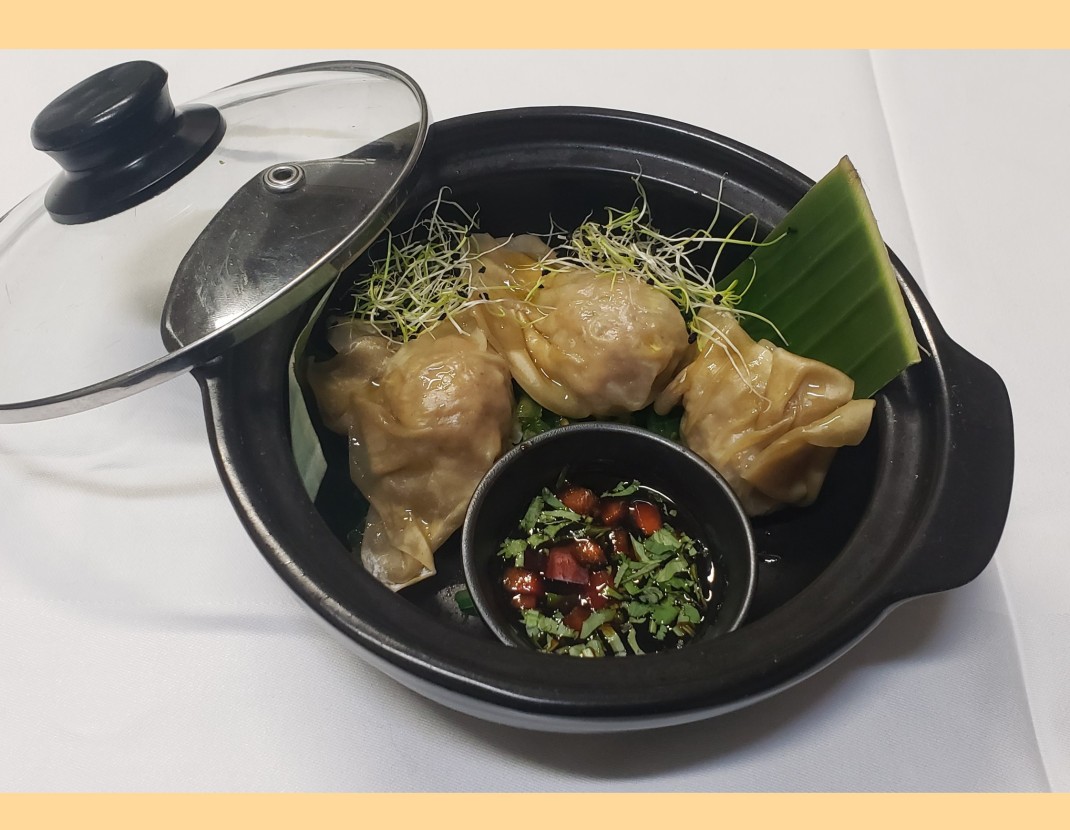
10.00 €
Ti bouchon pork shrimp Combawa
Homemade ti bouchon, with pork and shrimp flavored with kaffir lime - careful 15 minutes of cooking!!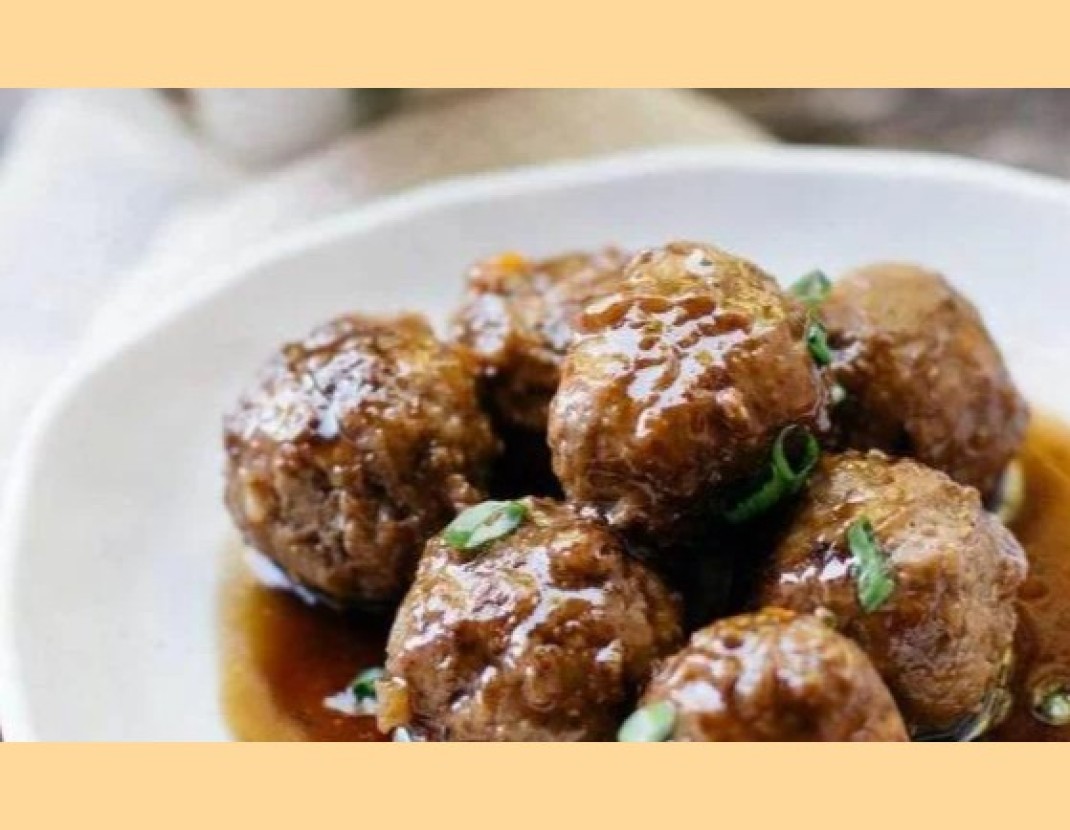
10.00 €
Crystal Niouk Bèf
Steamed beef meatballs flavored with ginger - be careful, the texture may surprise you - it's hit or miss...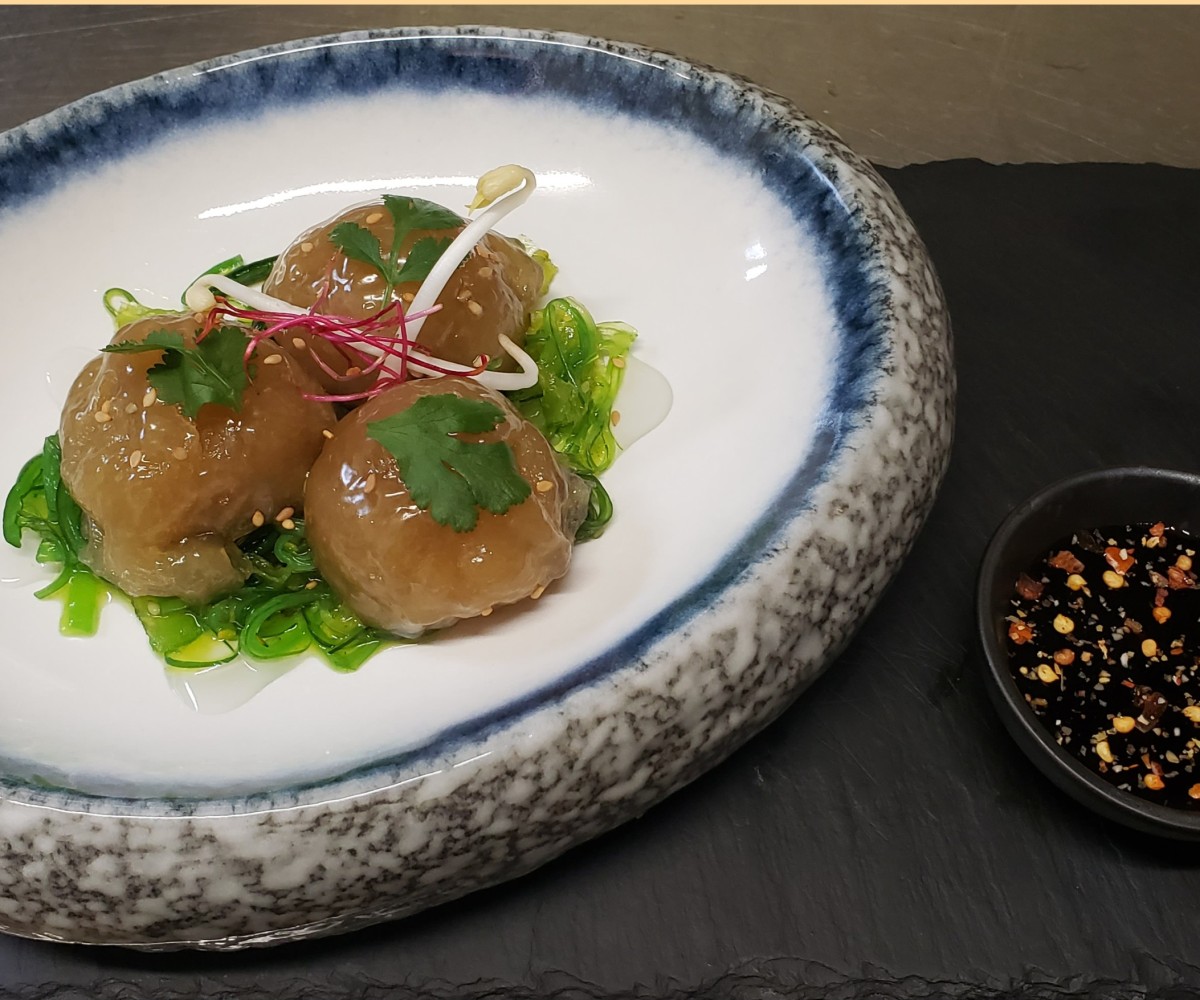
10.00 €
Niouk Yen Crystal
4 Steamed Christophine (Chayote) Balls - be careful, the texture may surprise you, it's hit or miss - you'll have to like the play of textures.Winter Broths
16.00 €
Ti Bouchon Bouillon
Ti buchon soup with pork, shrimp and rice vermicelli15.00 €
Christophine Dumplings Broth
Broth, Christophine dumplings, rice vermicelli, cabbage and carrots15.00 €
Broth and Steamed Beef Meatballs
Broth, Steamed Beef Meatballs, Rice Vermicelli and CorianderEarth
The sea
Fish & Shellfish

23.00 €
Mauritian Fish Rougail
Essential Fish Rougail, accompanied by Creole Rice - Non-spicy dish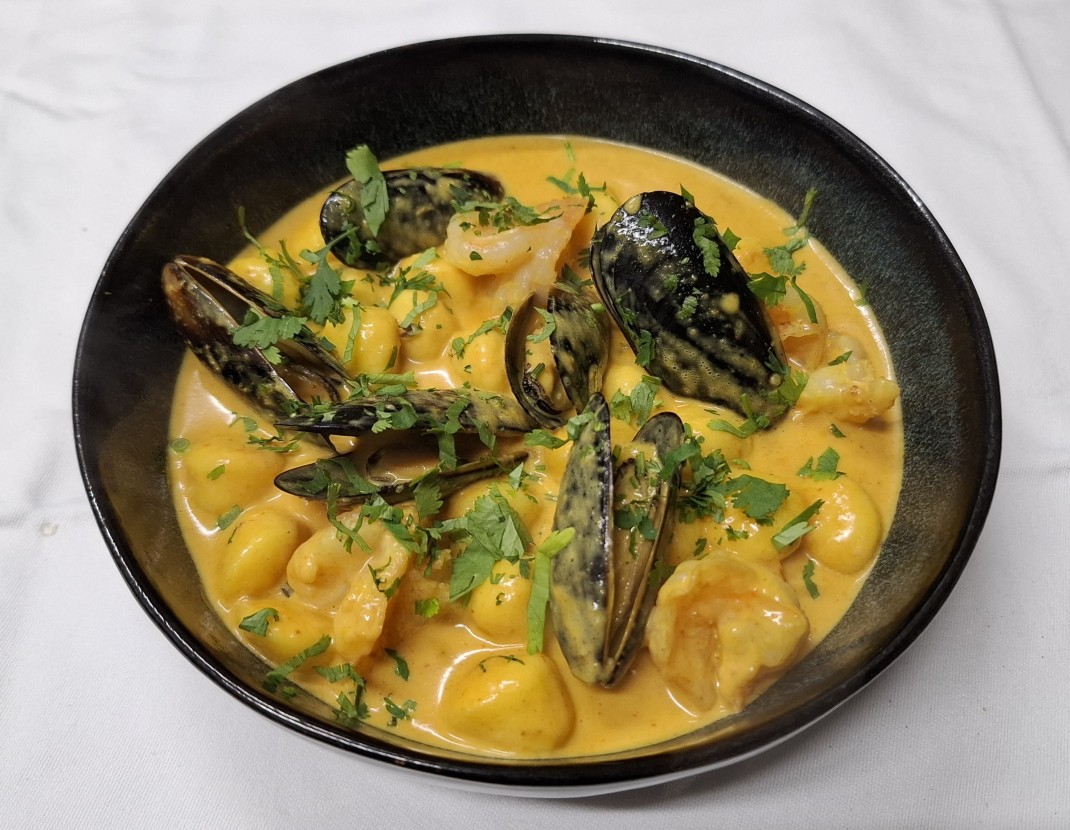
21.00 €
Dombré shrimp and mussels revisited in the Caribbean style
Pasta balls cooked in a curry sauce accompanied by shrimp and mussels.Caution: spicy dish!!
House Specialties
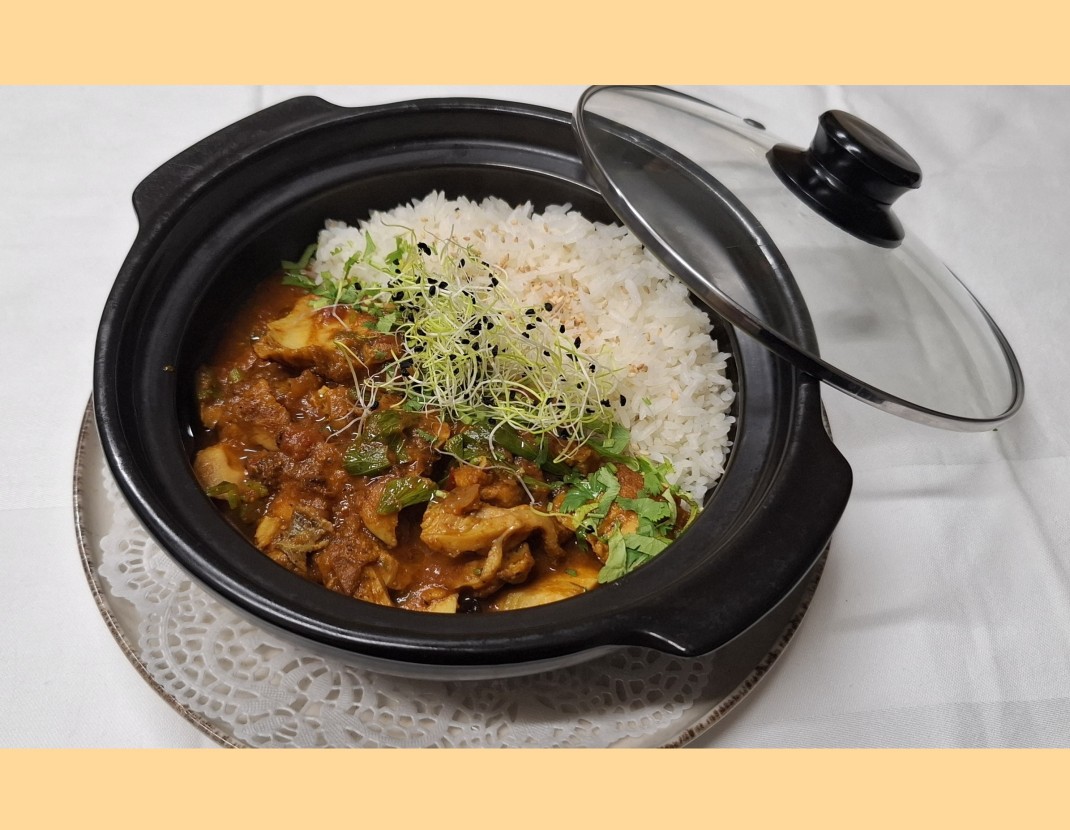
24.00 €
Chicken Briani Masala Revisited
Briyani from Mauritius, chicken Madras flavor
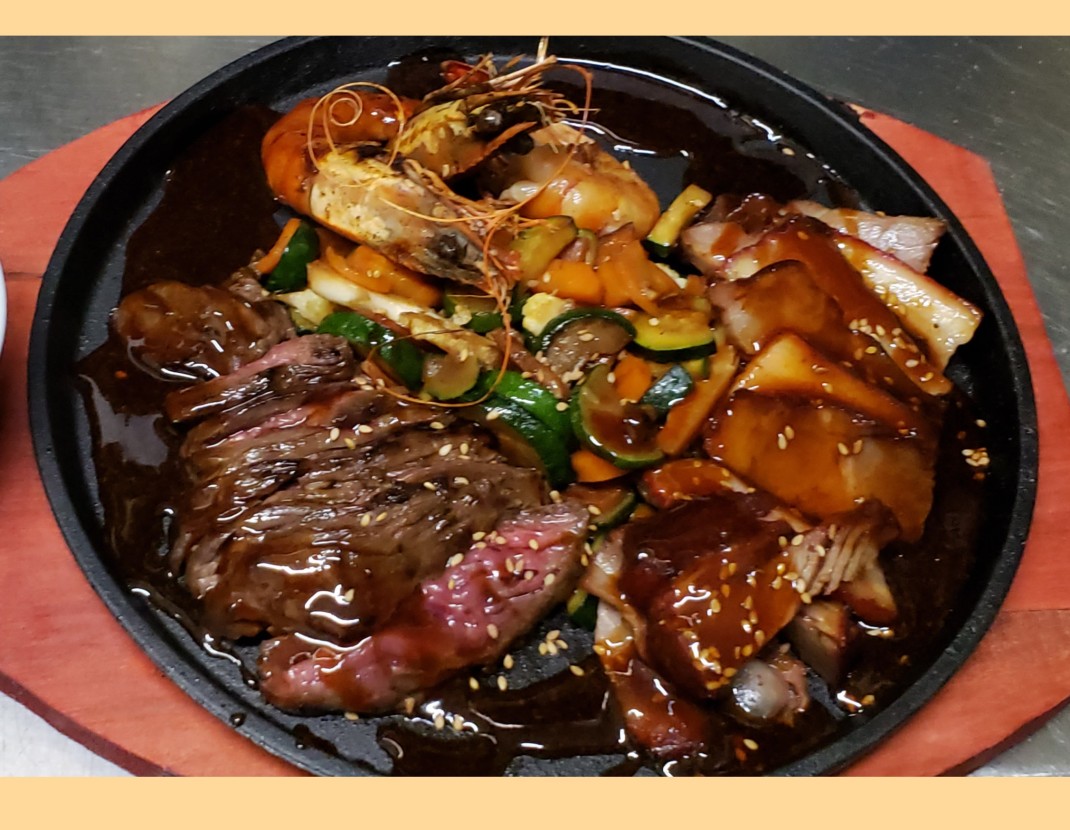
35.00 €
Surf and Turf
A dish originating from the Caribbean – a surf and turf combination (glazed chicken, beef, and grilled tiger prawns) all flambéed with aged rum – Please note: 15 to 17 minutes preparation time after orderingThe vegetation
21.00 €
Vegetable curry
Vegetable curry and farata pancake18.00 €
Vegetarian Dombré with curry
Dombré with curry and vegetables19.00 €
Coconut curry vegetables
Seasonal vegetables with coconut and coriander curry sauceAccompaniments
5.00 €
Crispy Sweet Potato Fries
The Chef's chilli to be ordered at the start of the service
Chilli paste that the chef makes himself with bird's beak chilli and Thai chilli.Message from the Head Chef : Be careful, he does not forgive and do not complain if you are on the verge of death, at your own risk!!!!
3.50 €
Farata bread
Here the chef offers a galette farata as bread.Because on the islands, knowing how to make bread is not a tradition.
3.00 €
Creole rice
Fragrant jasmine riceChildren's menu
Children's menu from 3 to 10 years old
Child : 15.50 €
Adult - excluding drinks - excluding dessert : 19.90 €
Breaded cod fillet
Crispy Breaded Cod FilletChild : 15.50 €
Adult - excluding drinks - excluding dessert : 19.90 €
Crunchy Chicken
Crispy Breaded Chicken FilletDesserts

13.00 €
BaBa with island rum
Rum baba and a shot of Saint James vanilla rum, Petit Chabin ice cream (milk flower, rum and candied fruit) and caramelized Pineapple Brunoise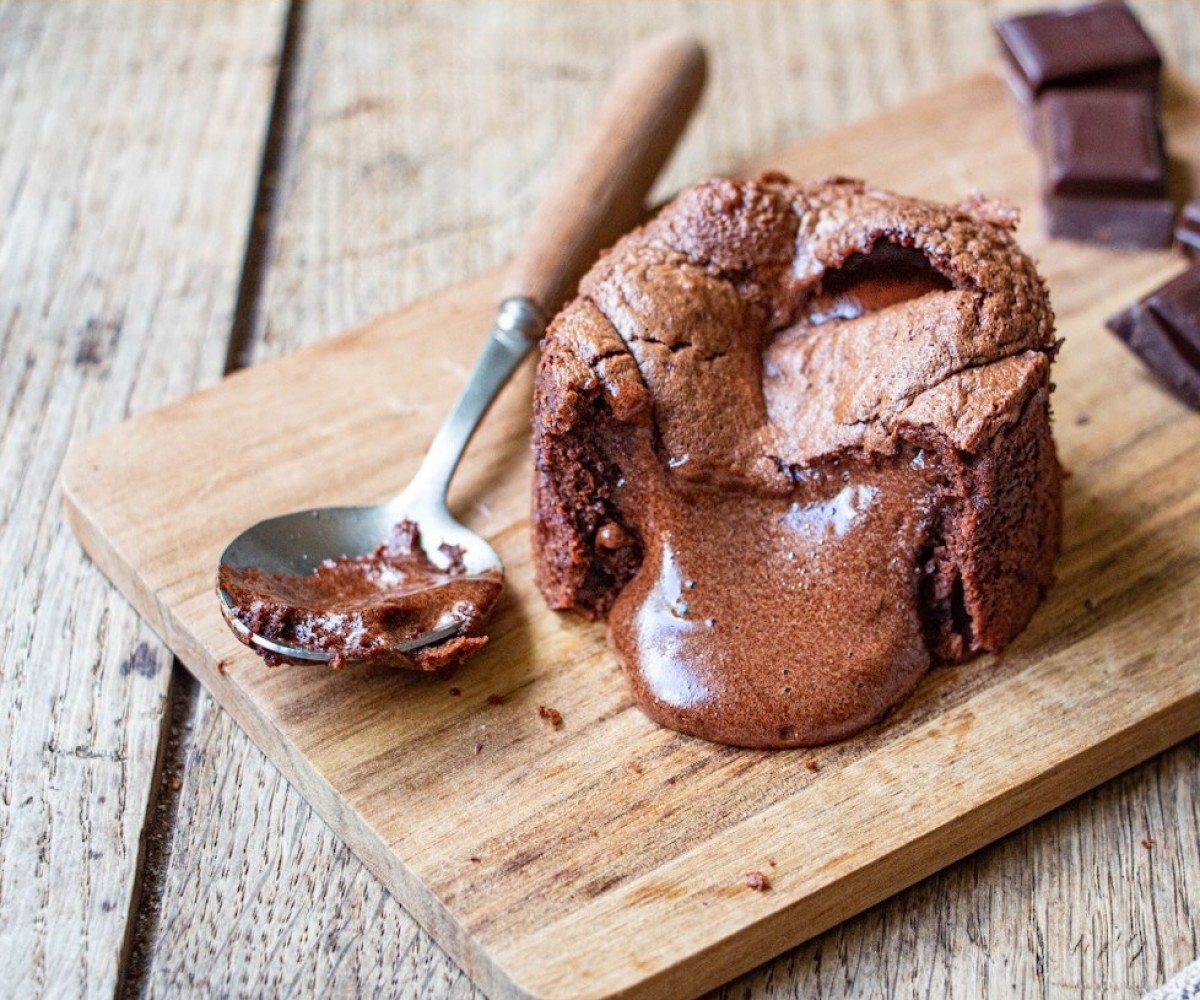
15.00 €
Chocolate Fantasy
Dessert of the 5th and 7th deadly sins (Gluttony & Lust)Intense chocolate dessert rich in ginger and its scoop of candied ginger ice cream.
Please note: 15 minutes preparation time, including cooking time...
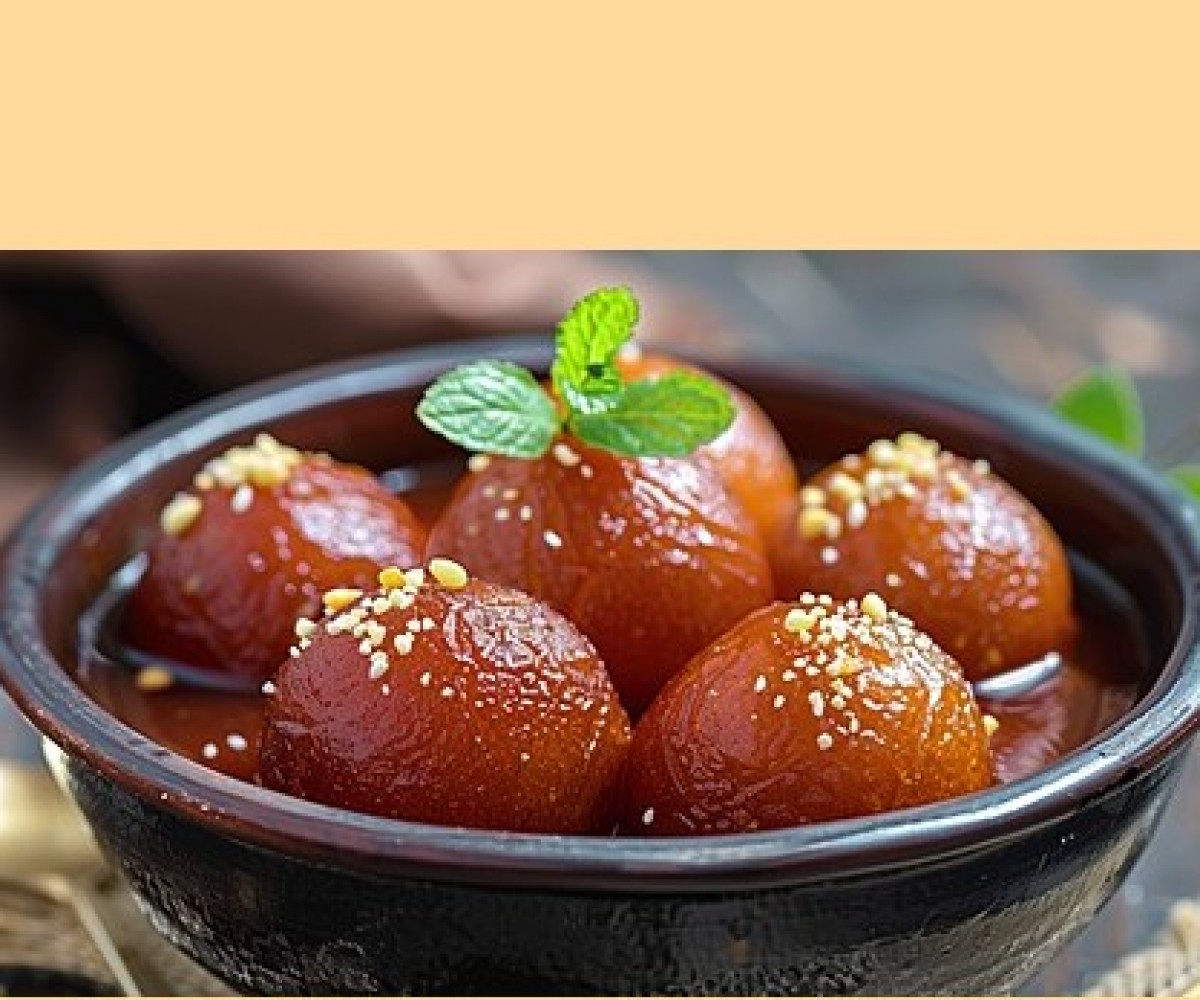
10.00 €
Gulab Kulfi
Revisited dessert found in the Indian Ocean -Gulab jamun is a dessert found in the Indian Ocean whose terms “gulab” come from rose water and “jamun” comes from a fruit that gulab jamun resembles. These are balls of dough coated in a syrup flavored with spices.
The Kulfi
Its origin dates back to the Mughal era, where ancient preparations from the Indian Himalayas as well as Persian sorbet inspired its creation. It is mentioned in the Akbarnama, where it is said that the need for a cold source to make ice cream would have pushed the Mughal emperors to import snow and ice from the Himalayan mountains, the Karakoram and Hindu-Kush.
Kulfi is prepared by reducing milk, cream and condensed milk. The result is then flavored then frozen, then brewed with pistachio fines and cardamom extract.
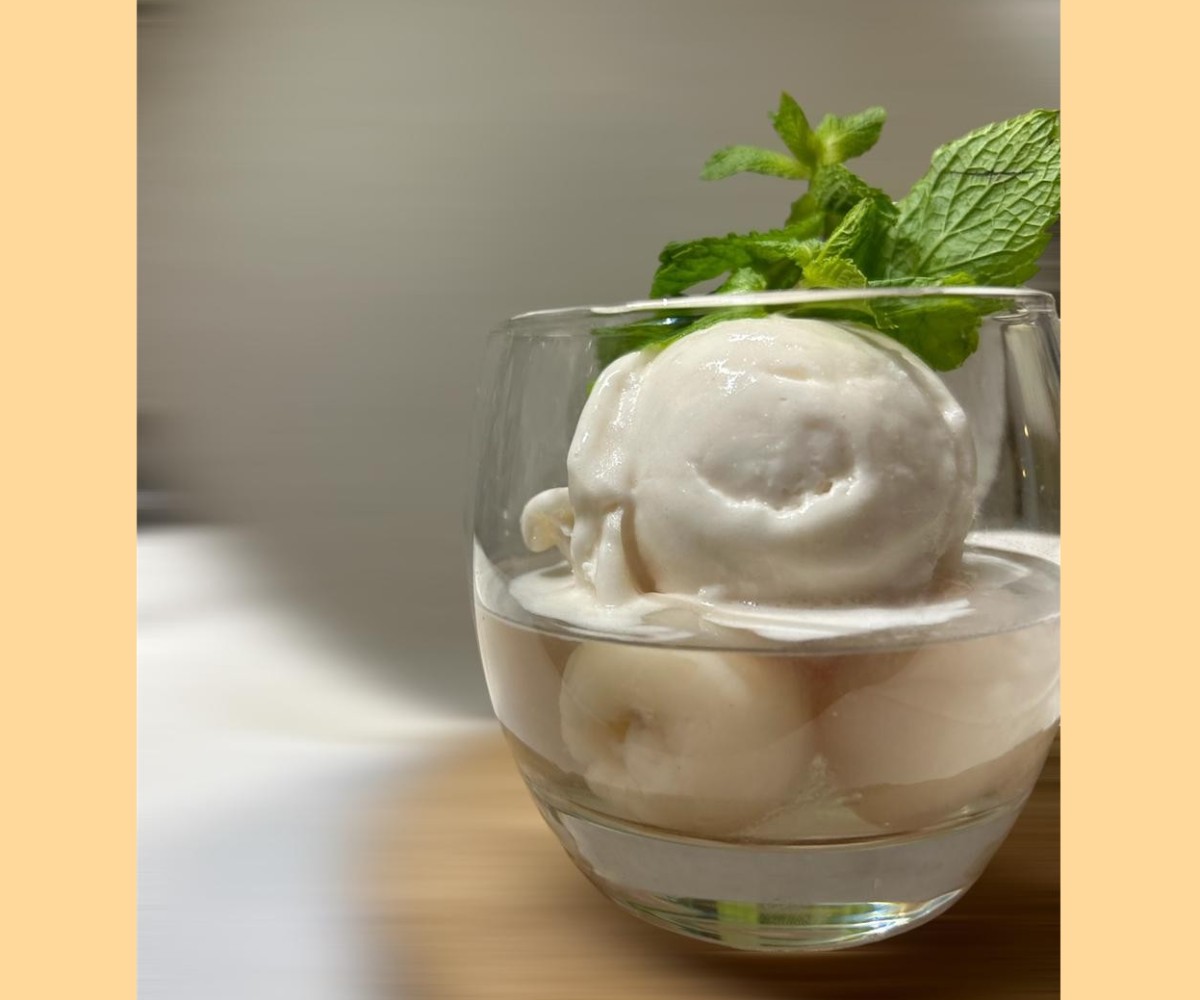
9.00 €
The Litchi Room
To finish on a note of freshness so as to feel light at the end of the meal, we offer you this dessert made from lychee sorbet, Japanese lychee liqueur and lychees in fresh syrup.
Ice Cream
4.00 €
1 scoop of ice cream
The recipes are created by the chef and then made by our ice cream maker "La Pause Glacée" at 2 av Thiers Menton5.50 €
2 scoops of ice cream
The recipes are created by the chef and then made by our ice cream maker "La Pause Glacée" at 2 av Thiers Menton7.00 €
3 scoops of ice cream
The recipes are created by the chef and then made by our ice cream maker "La Pause Glacée" at 2 av Thiers MentonNet prices - Taxes and service included
